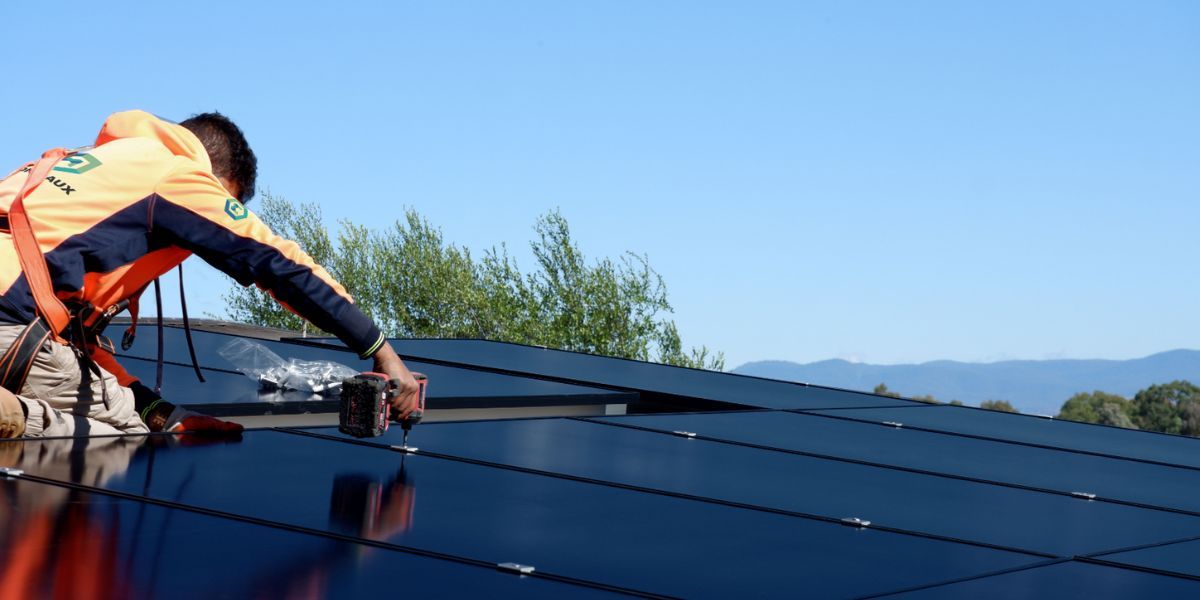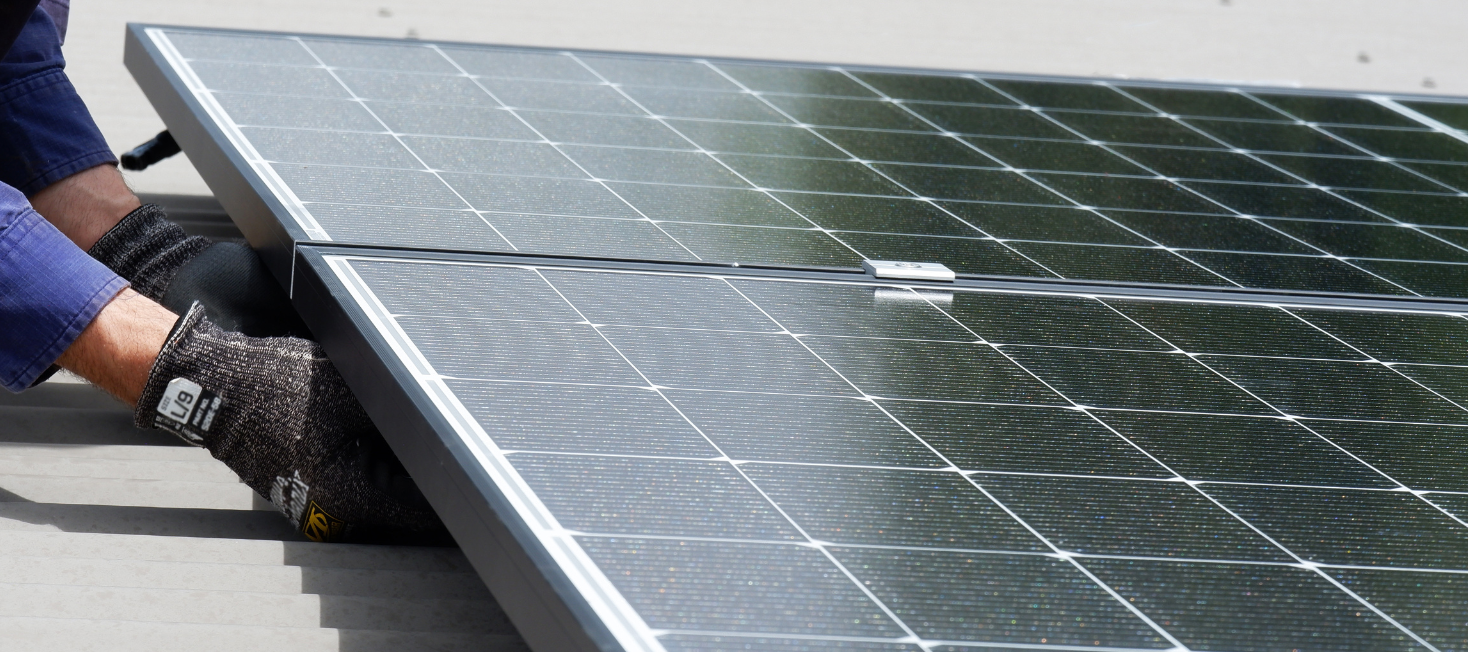The Best Location to Install a Solar Battery at Home
Solar batteries can be installed either indoors or outdoors as long as they comply with AS/NZS 5139:2019, the installation requirements for Battery Energy Storage Systems (BESS).
The ideal location to install a solar battery for residential properties is inside the garage. A garage provides insulation from direct sunlight and protection against environmental factors like fluctuating temperature and moisture, helping to extend the solar battery’s lifespan. Most importantly, it has suitable space to comply with the safety regulations.
What are the regulations for BESS in Australia?
According to Clean Energy Council (CEC) regulations, all BESS must be installed following the current AS/NZS 5139:2019 standards.
Additionally, all CEC-accredited individuals must adhere to the latest versions of the following standards:

What is the ingress protection (IP) rating?
The IP Ratings indicate the level of security a device has against dust and moisture.
The IP code is composed of two numerals:
- The first numeral refers to protection against solid objects and is rated on a scale from 0 (no protection) to 6 (no dust ingress).
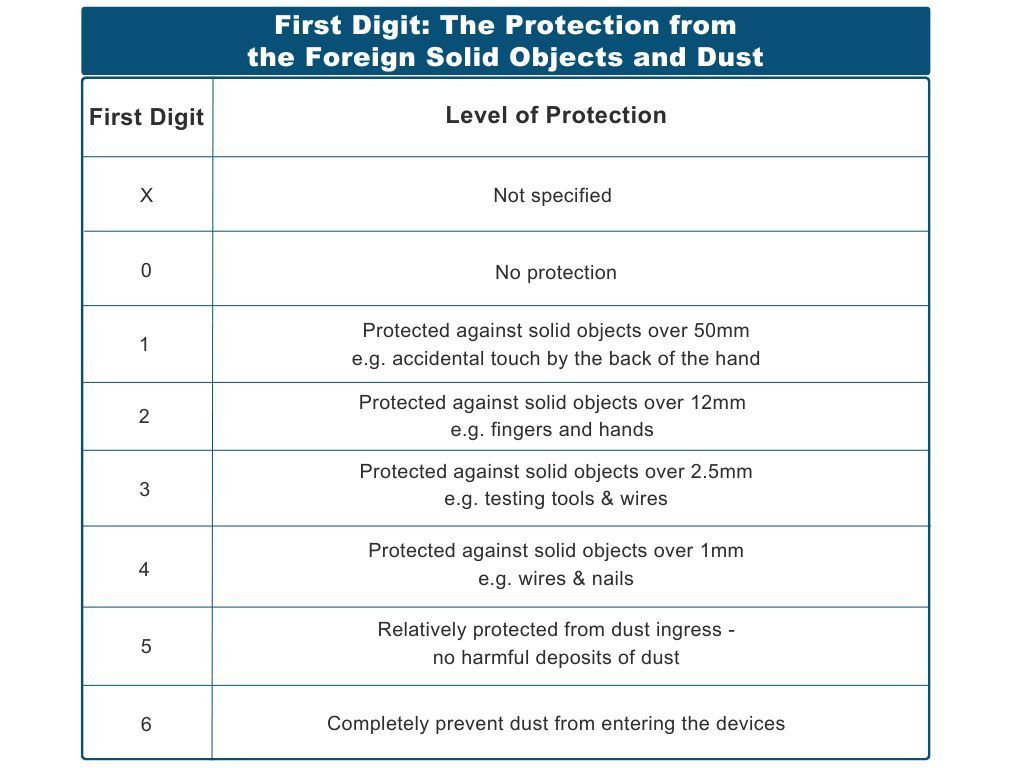
- The second numeral rates the enclosure’s protection against liquids, using a scale from 0 (no protection) to 6 (high-pressure hot water from different angles).
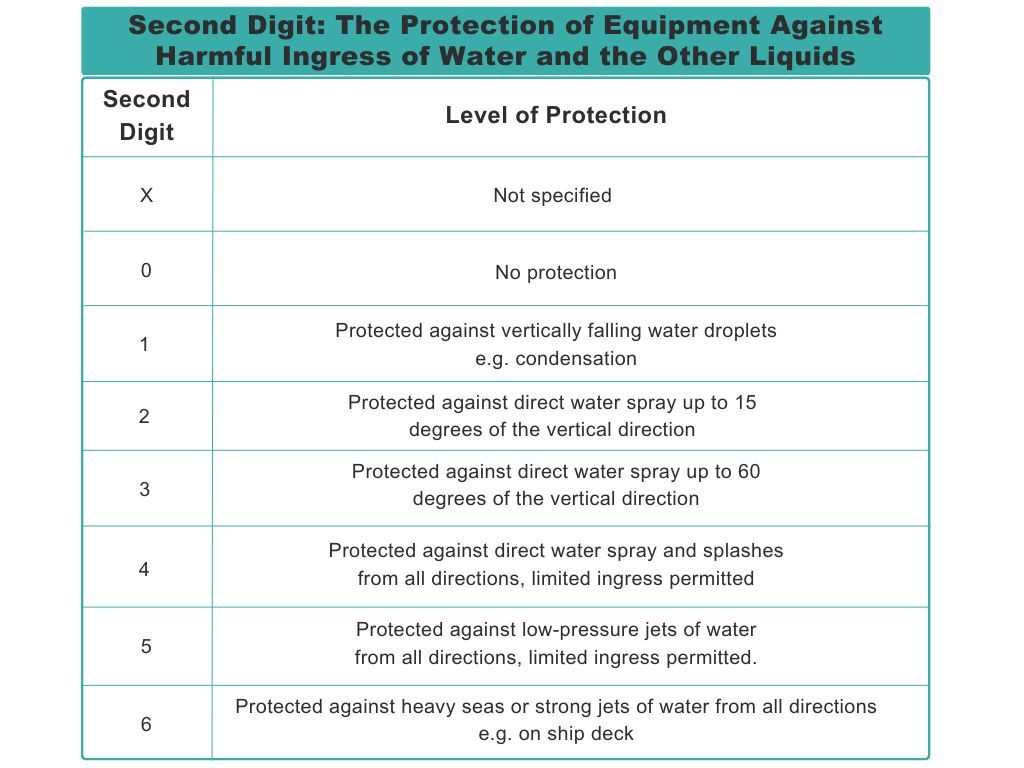
Where should you store your solar battery: indoors or outdoors?
The primary factor to consider before installing a battery is the location of your residence.
- Do you live near the sea?
- Do you get heavy rainfall?
- Is your climate typically quite moist?
- Do you live near a desert where the sun shines consistently?
If you answered “yes” to any of the questions, installing the batteries indoors is generally recommended. Most solar batteries can be installed either indoors or outdoors if it’s safe for the battery and residents. The best guidelines to use for solar batteries are the manufacturer’s instructions, the CEC regulations, and the battery IP ratings.
Where are indoor locations where batteries cannot be installed?
Based on AS/NZS 5139:2019, these are locations where batteries cannot be installed:

What is a habitable room?
According to AS/NZS 5139:2019, BESS should not be installed in habitable rooms, which include but are not limited to:
- Bedrooms
- Studies
- Entertainment rooms
- Living Rooms
- Dining Rooms
- Kitchens
The non-habitable rooms, which are the suitable areas to install a BESS may include:
- Garages
- Bathrooms
- Walk-in Closet (WIC)
- Laundry
- Covered Porch
- Hall
- Foyer
- Porch
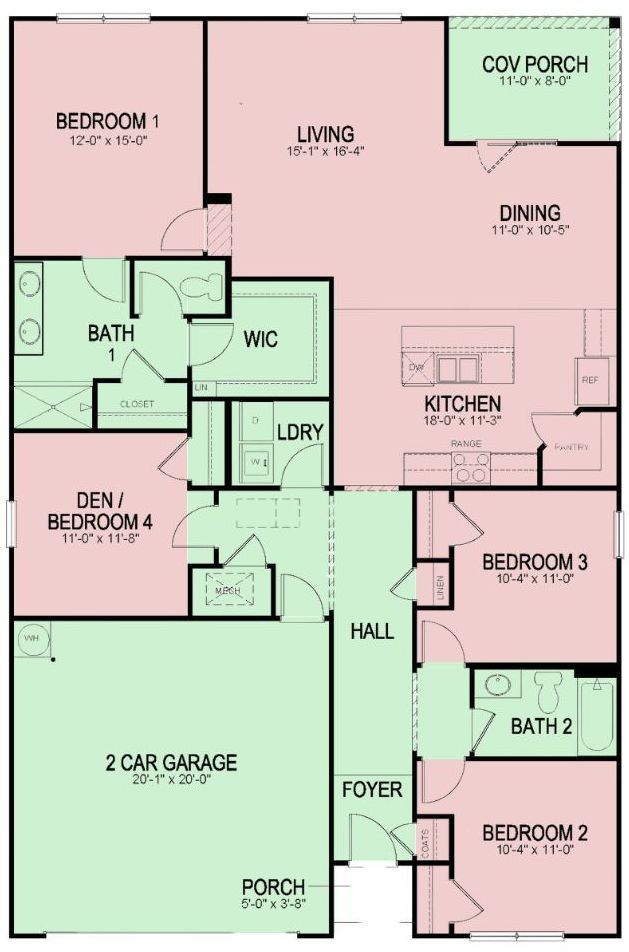
Where is the best location to install solar batteries indoors?
The best place to install a residential solar battery indoors is the garage. Garages are non-habitable rooms, and they have suitable space to comply with all the safety regulations.

What factors should be considered when installing your battery outdoors?
Similar to indoor installations, outdoor placement of solar batteries requires careful consideration of factors such as heat, moisture, and dust. Additionally, house material is a factor that should be considered when installing your battery outdoors.
According to AS 1530.1, batteries should ideally be installed on fire-resistant concrete board, including:
- Brick or masonry blocks,
- Concrete,
- Compressed cement sheeting, and
- Ceramic or clay-based tiles (also known as terracotta)
For weatherboard houses, it may be necessary to install a fire-resistant concrete board between the battery and the house in certain situations. However, in a brick house, the installation location for the battery can be more flexible.
Weatherboard houses
If the battery is installed outdoors, it should not be placed on a wall with a habitable room on the other side.
If no other option is available, a fire-resistant concrete board must be used between the battery and the wall. The fire-resistant concrete board must extend 600mm above the sides of the battery and 900mm above the top.
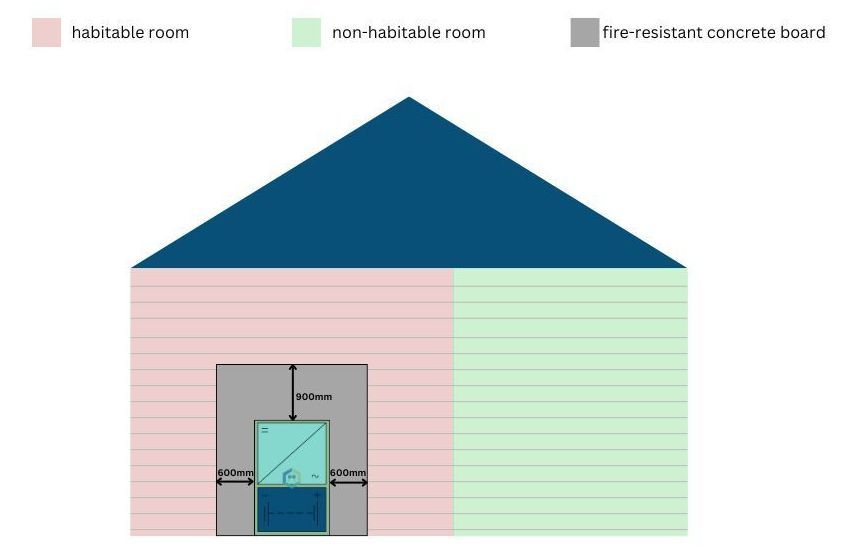
There are no restrictions if the room on the other is a non-habitable room.
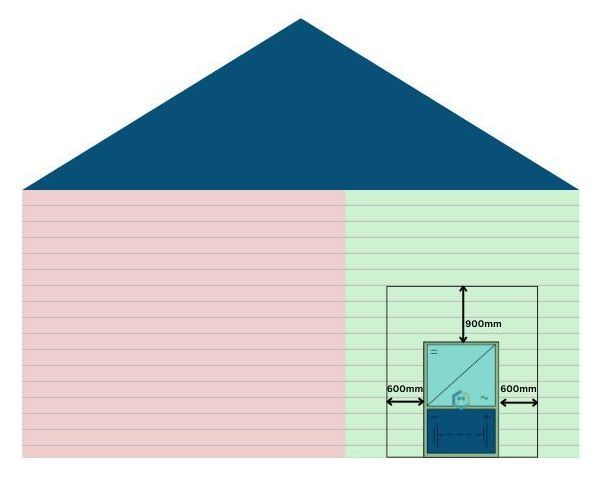
Brick house
Because brick is non-combustible, the placement of the battery on the outside is much more flexible. If the room on the other side is a habitable space, the battery cannot be installed in a location with a window or door within 600mm to the side or 900mm above the top of the battery.
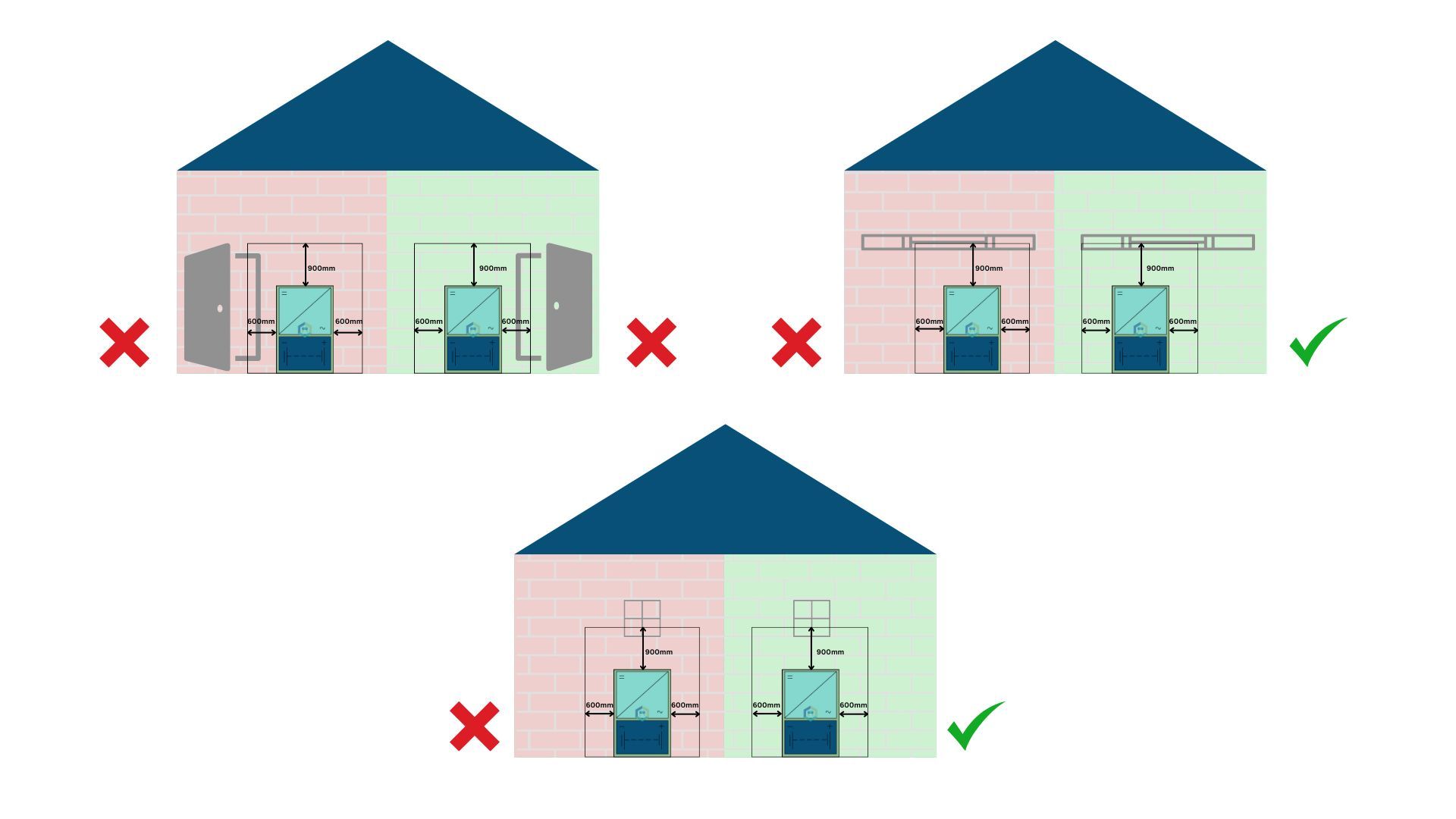
When deciding where to install your solar battery, it’s essential to consider your home’s unique environment and comply with relevant safety standards.
If you are unsure about the best location for your solar battery or have any questions, feel free to
contact us. Our team is here to guide you through the process, ensuring a safe and efficient installation that maximises the performance and lifespan of your solar battery system.
Share Post
